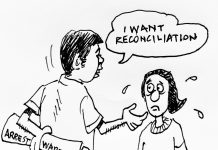
Misunderstanding is often the result for not being able to right message to another individual. This leads to unending exchange of hurtful words that leads to broken relationships. Be it in the professional or private life, effective communication is extremely important. When we convey our thoughts clearly, individuals are able to understand better, build strong relationships, and achieve their objectives.
Effective communication serves as the cornerstone of productive relationships, both personal and professional. It facilitates a deep understanding between individuals, fostering mutual respect, trust, and empathy. In our increasingly interconnected world, the ability to communicate effectively is more crucial than ever. This skill transcends the mere exchange of information; it involves understanding the emotions and intentions behind the information.
How can we enhance our communication skills?
Communication is a two-way street. This means that when one talks, the other should listen. But more than listening and talking, the right words should be conveyed without the need to hurt or to mislead each other.
The first strategy revolves around active listening, a cornerstone of effective communication. Beyond merely hearing the spoken words, active listening encompasses full concentration on the speaker, understanding the conveyed message, responding thoughtfully, and retaining the shared information. The essence lies in comprehending the thoughts, ideas, and feelings embedded in the words.
Reflection: “How often do you genuinely listen to those who communicate with you?”
Non-verbal communication forms another significant strategy. This aspect transcends verbal exchanges and involves body language, facial expressions, gestures, eye contact, and tone of voice. These non-verbal cues can convey a wealth of information beyond mere words, and awareness of these signals can significantly enhance the clarity and understanding of interactions.
Reflection: “Are your actions aligned with the messages you are conveying to the other person?”
Clarity and conciseness constitute the third strategy. The key is to avoid unnecessary jargon or complex language that might confuse the audience. The message should be straightforward, succinct, and to the point, which aids in preventing misunderstandings and respects the listener’s time.
Reflection: “Do your words possess sufficient clarity for easy comprehension?”
Empathy, the ability to understand and share the feelings of others, forms the fourth strategy. By empathizing with the communication partner, one can better understand their viewpoint and respond respectfully and understandingly. This approach fosters trust and strengthens relationships.
Reflection: “To what extent do you demonstrate empathy towards others?”
The fifth strategy, open-mindedness, is essential for effective communication. It is crucial to remain open to understanding others’ perspectives, even when they diverge from one’s own. This approach can lead to more productive conversations and a more profound understanding of others.
Reflection: “Are you receptive to understanding different perspectives and viewpoints?”
The sixth strategy involves feedback, an integral part of communication. Constructive feedback can offer valuable insights into how one’s communication is perceived and how it can be improved.
Reflection: “How do you effectively manage and respond to criticisms?”
Respect, the seventh strategy, is fundamental to any communication. It involves treating everyone with kindness and respect, regardless of their views or opinions, which fosters an environment conducive to open and honest communication.
Reflection: “Do you value and respect the feedback you receive from others?”
The eighth strategy, emotional intelligence, involves recognizing, understanding, and managing our own emotions and the emotions of others. This skill enhances communication effectiveness, helps navigate social complexities, and aids in making personal decisions that yield positive results.
Reflection: “How do you cultivate self-awareness and mindfulness to enhance emotional intelligence?”
The ninth strategy is the effective use of technology. In the digital age, tools such as email, social media, video conferencing, and instant messaging can enhance communication. However, it’s crucial to use these tools appropriately and maintain a balance between digital and face-to-face communication.
Reflection: “Are you making the most of the available technology to enhance your communication abilities?”
Effective communication, therefore, involves not just speaking and conveying thoughts, but also listening actively and responding thoughtfully. It requires a delicate balance of articulating one’s own ideas and understanding others’ perspectives. By fostering clarity, preventing misunderstandings, and promoting transparency, effective communication paves the way for better understanding and improved relationships. It is an indispensable tool that, when utilized properly, can enhance collaboration and harmony in various social and professional contexts.
————–
If you have any questions or would like to share your thoughts on the column, feel free to send an email to jca.bblueprint@gmail.com. Looking forward to connecting with you!



